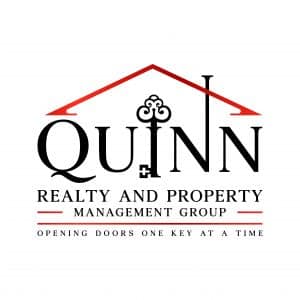Discover Quinn Realty and Property Management Quality Today
Discover Quinn Realty and Property Management Quality Today
Blog Article
Optimizing Building Administration Workflow for Long-Term Productivity and Occupant Retention

Reliable Communication Techniques
Clear and effective communication guarantees that all stakeholders, including building owners, renters, maintenance staff, and management, are on the same web page, leading to smoother operations and enhanced tenant contentment. Property supervisors ought to clearly describe lease terms, upkeep treatments, and interaction networks to avoid misconceptions down the line.
Using innovation can additionally substantially improve interaction effectiveness in building administration. Executing residential or commercial property monitoring software application that enables real-time updates, automated alerts, and simple documents can enhance interaction procedures and improve overall operational performance. Furthermore, routine interaction via different networks such as e-mail, call, and in-person meetings can assist cultivate favorable connections with occupants and attend to any problems immediately.
Innovation Assimilation for Upkeep
In the world of residential or commercial property monitoring optimization, a key element that improves operational effectiveness and upkeep procedures is the combination of modern technology for enhancing maintenance tasks. By integrating modern technology into upkeep procedures, building managers can take advantage of improved work order administration, proactive upkeep organizing, and boosted interaction with upkeep groups and lessees.
One significant benefit of technology integration in maintenance is the capability to systematize work orders and track maintenance demands digitally. This improves the process of getting, appointing, and completing maintenance tasks, bring about quicker response times and increased occupant contentment. Anticipating upkeep technologies can aid in recognizing potential problems before they rise, minimizing the probability of pricey repair work and decreasing downtime.

Data-Driven Decision Making
Utilizing data-driven insights empowers building managers to make educated choices that enhance functional efficiency and optimize property efficiency. Quinn Realty and Property Management. By leveraging information analytics devices and modern technologies, residential or commercial property supervisors can extract important information from different sources such as tenant comments, maintenance documents, and market fads. This data can supply critical insights into lessee preferences, operational traffic jams, and cost-saving possibilities
Data-driven decision-making allows residential or commercial property managers to identify patterns and trends that might not be evident through typical monitoring. Assessing upkeep data might disclose reoccuring concerns in particular units, allowing managers to proactively deal with underlying issues and avoid future costly repairs. Furthermore, by monitoring tenant fulfillment metrics and lease revival rates, building supervisors can customize their services to meet occupant assumptions, ultimately enhancing renter retention and long-lasting profitability.
In addition, data-driven understandings can also inform critical financial investment decisions by highlighting locations for renovation or expansion based upon market demand and efficiency metrics. Overall, incorporating data-driven decision-making processes into property monitoring procedures can lead to extra efficient source allotment, improved occupant complete satisfaction, and increased earnings in the future.
Lessee Contentment Efforts
Attracting insights from data-driven decision-making, residential property managers can execute targeted lessee satisfaction initiatives to boost overall leasing experiences and foster lasting lessee connections. By recognizing tenant preferences and discomfort factors, building managers can tailor their services to fulfill the specific needs of their occupants, inevitably resulting in higher satisfaction degrees and increased tenant retention prices.
One efficient lessee satisfaction initiative is to establish clear lines of interaction with renters to resolve any type of problems promptly. Regular feedback studies can also provide useful insights right into renter complete satisfaction levels and locations for enhancement. Home managers can use this feedback to make essential modifications and reveal lessees that their viewpoints are valued.

Furthermore, arranging neighborhood events and services that satisfy the rate of interests of lessees can create a feeling of belonging and boost overall contentment. By fostering a positive and appealing community setting, building supervisors can strengthen tenant partnerships and encourage long-lasting leases, eventually increasing profitability my review here and lessee retention in the long run.
Improving Functional Procedures
One crucial facet of enhancing operational procedures is the assimilation of innovation services such as residential property administration software application, which can automate tasks, simplify communication, and give real-time information understandings. By digitizing processes like upkeep requests, rent collection, and lease renewals, residential property supervisors can save time, lower mistakes, and improve tenant fulfillment.
Furthermore, executing standardized treatments and process can help develop uniformity across homes, minimize complication, and improve daily operations. Routinely evaluating and maximizing these procedures is important to adapt to transforming market problems, occupant requirements, and governing demands. By continually seeking means to simplify operational processes, building supervisors can not just boost their very own performance yet also supply far better services to lessees, inevitably leading to long-lasting profitability and occupant retention.
Verdict
To conclude, optimizing home monitoring procedures through reliable communication, innovation assimilation, data-driven choice production, occupant satisfaction initiatives, and improving processes is necessary for long-lasting productivity and renter retention. By applying these strategies, property managers can improve operational performance, minimize costs, and enhance tenant fulfillment, eventually causing boosted profitability and tenant loyalty. It is essential for property administration companies to continuously examine and change their procedures to fulfill the evolving demands of both occupants and the marketplace.
Clear and efficient communication ensures that all stakeholders, consisting of home owners, renters, upkeep personnel, and monitoring, are on the same web page, leading to smoother procedures and enhanced renter satisfaction - Quinn Realty and Property Management. By monitoring lessee satisfaction metrics and lease renewal prices, building managers can customize their services to meet renter expectations, inevitably boosting tenant retention and long-lasting profitability
By continuously seeking ways to simplify operational procedures, building supervisors can not only boost their very own performance but additionally supply much better solutions to occupants, eventually leading to long-term productivity here are the findings and occupant retention.
In final thought, optimizing residential property monitoring procedures with efficient communication, innovation assimilation, data-driven decision making, renter satisfaction campaigns, and simplifying procedures is vital for lasting profitability and renter retention (Quinn Realty and Property Management). click By executing these methods, residential property managers can improve operational performance, minimize costs, and improve tenant fulfillment, inevitably leading to enhanced success and occupant loyalty
Report this page